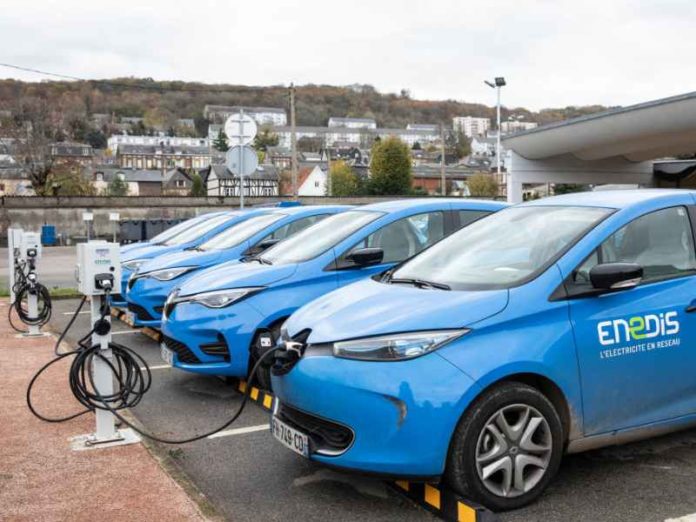
Image: Enedis / Sophie Brandstrom
1 million EV charge point milestone in France
French distribution system operator Enedis has reported the passing of 1 million public and private electric vehicle charging points connected to the country’s distribution network in Q2 of the year – a more than doubling since the start of 2021.
The majority are private, slightly more than half in private homes and the balance at companies, with only about 6% in public locations. And although the distribution across the country is uneven, on a per 100,000 inhabitant basis there is greater homogeneity, with the southeast particularly well equipped.
More than 900,000 electric and plug-in hybrid vehicles are on France’s roads currently and Enedis’s studies have indicated that the majority of EV users, almost 90%, do their main charging at home.
The number of EVs is estimated to grow to 17 million by 2035. A segment for focus is the condominiums, with around 180,000 with more than ten apartments and a parking lot and representing around 6.9 million parking spaces, but just 2% of them are equipped with charging infrastructure.
Centralised 24-hour supplier switching in GB
The new centralised switching service promising to deliver a 24-hour supplier switching is now live in Great Britain.
Supplier switching has long been an issue there, with the process found by many to be too complicated and too slow – often taking up to three weeks – and often going wrong.
The new service has been developed by the Data Communications Company, responsible for building the central smart meter data network, as an add-on and illustrates how a central network and repository of this type connecting customers with suppliers, network operators and other sector third parties can deliver added value.
The new service is aimed to initially reduce the time it takes to switch energy supplier to five working days and, later, to the next working day. It also should reduce the number of switches that either fail or should not have been executed as a result of poor quality address data.
Hydrogen propelled space ballooning
Booking is now open for a novel 6-hour flight to the edge of space in what is billed as the world’s only carbon neutral spaceship.
Spaceship Neptune, set for launch in late 2024, is comprised of a balloon filled with green hydrogen, below which is suspended a spherical capsule with seating and facilities for a pilot and eight passengers and providing a panoramic perspective.
The proposal is the craft will launch from the Kennedy Space Centre in central Florida and at a speed of about 20km/h will make a two-hour ascent to an altitude of about 30,500m – above the majority of the Earth’s atmosphere – where it will fly for about two-hours before making a similarly timed descent to splash down at a designated location in the ocean for pickup.
The concept is from the “luxury space travel company” Space Perspective. And the cost is $125,000, with seats securable with a $1,000 refundable deposit payable by credit card or cryptocurrency – but the first flights are already sold out, according to the company’s website.
Energy harvesting with a wearable
Energy harvesting is a burgeoning topic of interest with its potential to generate at least small amounts of power for low energy devices from many different sources.
Now University of Washington researchers have created what they claim as a first-of-its kind flexible, wearable thermoelectric device that also is soft and stretchable but sturdy that converts body heat to electricity.
The new devices were created as 3D printed composites with a filler material containing liquid metal alloys and have been shown to be printable on stretchable textile fabrics and curved surfaces, indicating their potential application to clothing or objects such as armbands.
“One unique aspect of our research is that it covers the whole spectrum, all the way from material synthesis to device fabrication and characterisation,” said Mohammad Malakooti, assistant professor in the University of Washington’s Institute for Nano-Engineered Systems.
The device is recorded as showing a 6.5 times increase in power density compared to previous stretchable thermoelectric generators and to remain fully functional after more than 15,000 stretching cycles at 30% strain.